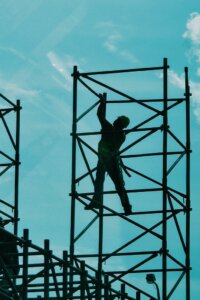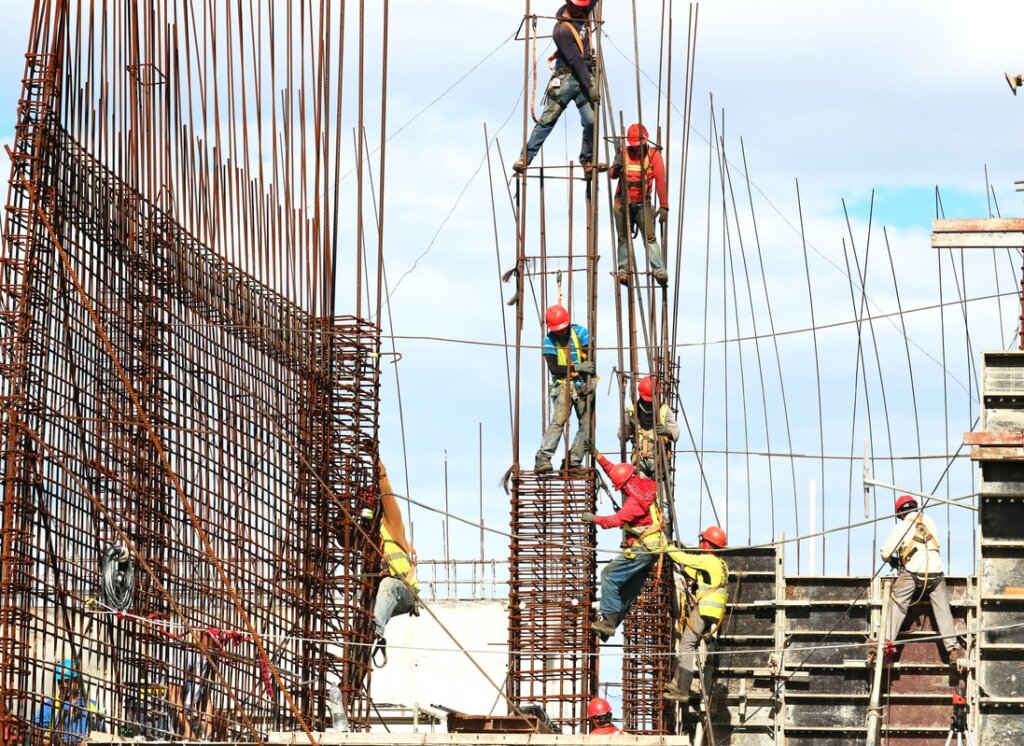Overview
Over 20% of all US workplace fatalities result from slips, trips, and falls within the construction industry.
The cost of these accidents can quickly add up. The average cost of a slip and fall injury is around $20,000, and the average cost to defend an insurance claim is $50,000. Beyond the cost of the injury, employers also have to account for the days missed by the employee as a result of treating the injury, compounding expenses in terms of lost productivity and higher insurance premiums down the line.
Given the hazardous nature of construction work, it’s critical that construction companies employ proper due diligence and planning to reduce risks on job sites. Below we discuss the most frequently cited hazards and how construction sites can work to significantly reduce slips, trips, and falls.
The Most Frequently Cited Hazards in Construction
Awareness of common risk factors is the first step to prevention. According to the Occupational Safety and Health Administration (OSHA), the most frequently cited hazards during worksite inspections include:
- Fall Protection Systems: With over 7,000 citations issued in 2019, a lack of proper fall protection systems is the most cited standard, and subsequently, one of the leading causes of construction-related deaths among workers.
- Scaffolds: According to OSHA, an estimated 2.3 million construction workers (65%) work on scaffolds. Over 3,000 citations for scaffolding violations were administered in 2019—making it the 2nd most common citation given by OHSA. Of the workers injured from scaffolding, over 72% attributed the accident to three causes: the planking giving way, being struck by a falling object, and slipping.
- Stairways and Ladders: The third most cited hazard on construction sites is improper ladder use—with nearly 3,000 citations occurring in 2019. Improper ladder use can result from a lack of adequate securement and/or attempting to carry tools while climbing.
Tips For Avoiding Slips Trips and Fall Construction Incidents
Once you’ve identified your site’s potential risk factors, it’s time to take action. OSHA recommends implementing the following practices as part of a culture of safety:
- Actively rope off and/or cover any floor holes or openings.
- Make sure to account for seasonal safety hazards such as snow or ice.
- Regularly offer safety training to workers on (at least) an annual basis.
- Urge workers to wear proper footwear that features slip-resistant soles.
- Use proper indoor and outdoor lighting, paying special attention to outdoor walkways, stairs, and parking lots.
- Etch tile or concrete floors to improve traction and promote a more non-slip surface.
How AI Can Manage Slip and Falls and Improve Construction Site Safety

Actuate AI is a smart camera technology that can be installed on any existing security camera hardware. The AI technology can detect a fallen person and alert security personnel in real-time to immediately identify safety hazards as well as render assistance immediately if necessary.
In addition, the solution provides necessary video evidence to mitigate legal liability in the case of frivolous lawsuits, and help organizations avoid expensive investigation fees. With the power of Actuate’s video AI surveillance, businesses can be confident that they are protecting their workers, their clients, and their bottom lines.



